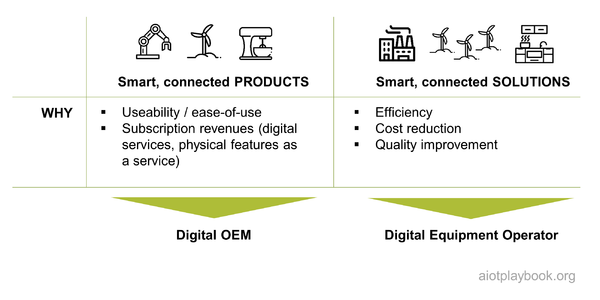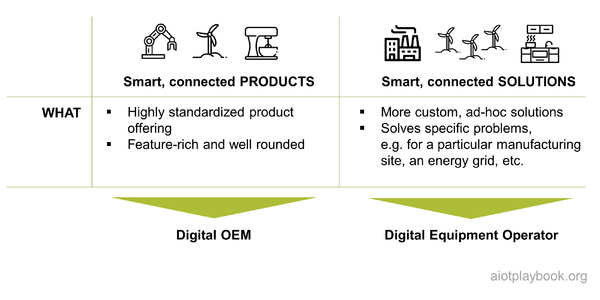
The key element of the AIoT Framework are the why, what, who and how perspectives, inspired by the work of Simon Sinek [1] as well as the St. Gallen IoT Lab [2]:
- Why: Better understand and articulate the purpose and AIoT-enabled business outcomes
- What: What can be achieved with AIoT in terms of smart, connected products and solutions
- Who: Roles and responsibilities in the context of an AIoT initiative
- How: Project blueprint for AIoT execution and delivery
Why: Purpose and AIoT-enabled business outcomes
While AI and IoT are exciting technical enablers, anybody embarking on the AIoT journey should always start by looking at the "why": What is the purpose? And what are the expected business outcomes?
From a strategic (and emotional) point of view, the purpose of the AIoT initiative should be clearly articulated: What is the belief? The mission? Why is this really done?
For the business sponsors, the expected business outcomes must be clearly defined as well. As will be discussed in the "what" section, most AIoT initiatives are either focusing on products or solutions. Depending on the nature of your initiative, the KPIs will differ. For AIoT-enabled products, they tend to focus more on the customer acceptance and revenue side, while for AIoT-enabled solutions they tend to focus more on efficiency and optimization.
More details on the "Why" of an AIoT initiative can be found here.
What: Smart, connected products and solutions
The "What" of an AIoT inititive can usually be described as a smart, connected product or solution. This is an important differentiation, which is discussed here.
Smart, connected products are often very highly standardized, feature-rich and well rounded. Smart, connected solutions on the other hand are often more custom, ad-hoc solutions. They are often designed to solve a specific problems, e.g. for a particular production site, a particular energy grid, etc.
Obviously, this is not a black and white differentiation. There are also often cases which are a bit of both, product and solution. A good example is a standardized retrofit solution for elevator monitoring, which is offered as a product.
How: Getting things (and AI) done
The now widely accepted agile project methods in the IT world are heavily based on incremental value creation and continuous improvement. Business models are evaluated early using MVPs (Minimal Viable Products), and the fine-tuning of the business model is rapidly supported by agile sprints. This works well in IT, especially supported by cloud-based development. For AIoT, the constraints of the physical world have to be taken into consideration, including longer lead times and safety requirements. This can require longer-term planning and increased focus on verification and validation - especially for smart, connected products. For smart, connected solutions, this can look differently. From a "how" perspective, it is important to understand this differentiation and its implications.

